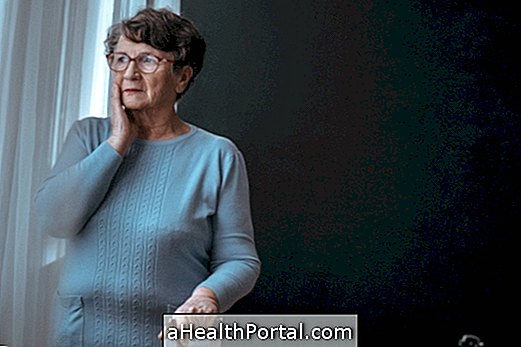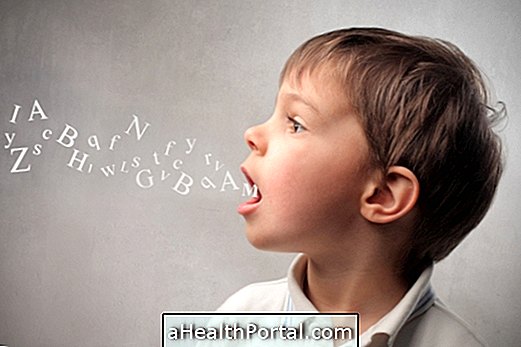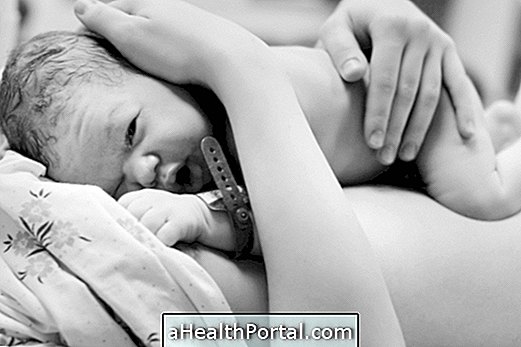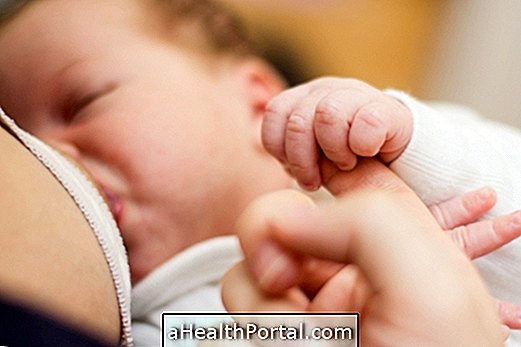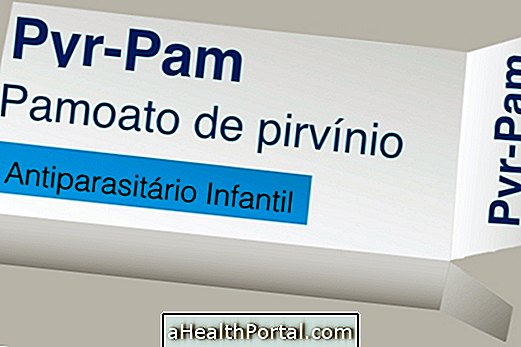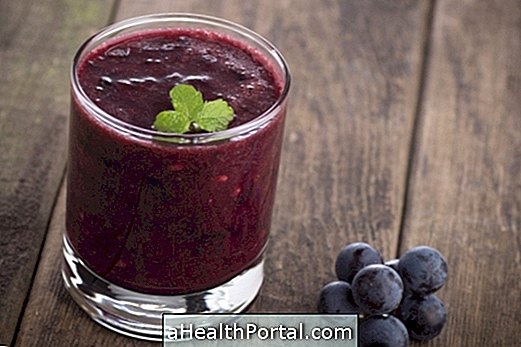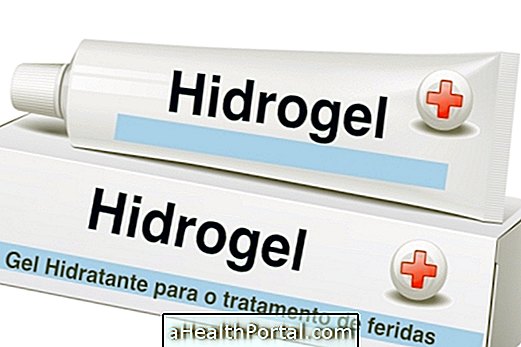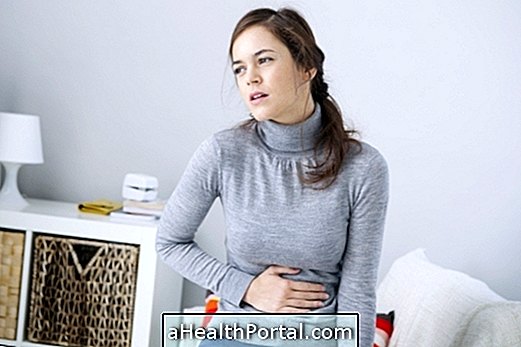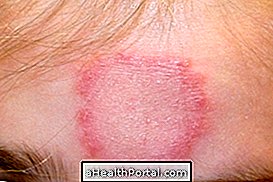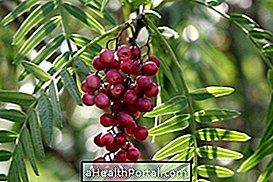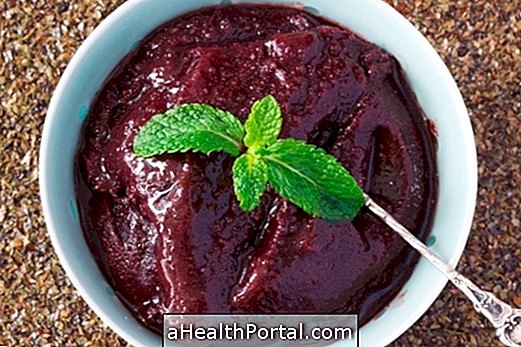Medicines for worms, such as Albendazole and Mebendazole, are taken at the doctor's recommendation if worms are found on the test or suspected. Usually the treatment is done in a single dose, but schemas of 3, 5 or more days may also be indicated, which varies according to the type of medication or worm to be combated.
The presence of worms in the body, in addition to causing uncomfortable symptoms such as diarrhea, nausea, tiredness and abdominal pain, can cause serious changes in the body, such as anemia, weight loss, deficiency in growth or even reaching important organs such as liver or the brain, for example, especially in children and people with weakened immunity.
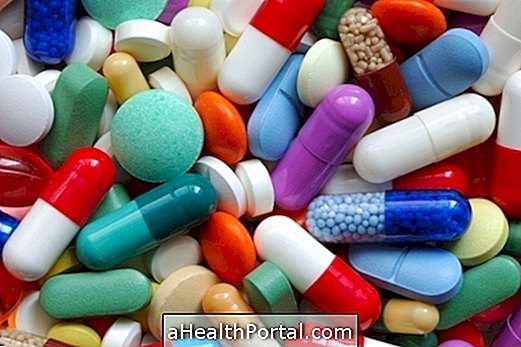
Thus, performing faecal exams or taking deworming according to medical advice, especially when living in areas at increased risk of contamination, may be a good strategy to protect yourself from these complications. The main remedies used and their action for each type of most common worms are:
1. Albendazole
Albendazole is a widely used medicine, combating most intestinal parasites such as Ascariasis, Trichosephaliasis, Enterobiasis (Oxyuriasis), Ancylostomiasis, Strongyloidiasis, Teniasis and Giardiasis. Its action consists in degenerating the structures of the cells and tissues of worms and protozoa, causing the death of these parasites.
How to use : Usually, the dose of Albendazole used is 400 mg once-daily for the treatment of adults and children over 2 years of age, according to the package leaflet. However, in some cases, it may be advised by the doctor to use it for more days, such as for 3 days in cases of Strongyloidiasis and Teniasis, and for 5 days in cases of Giardiasis, for example.
Most common side effects : abdominal pain, headache, dizziness, nausea, vomiting, diarrhea, urticaria and elevations of the levels of some liver enzymes.
2. Mebendazole
This medicine is used to treat many types of worms because it destroys the functions of the cells responsible for the energy of the parasites, causing the death of worms that cause diseases such as Enterobiasis, Ascariasis, Trichocephaliasis, Echinococcosis, Ancylostomiasis and Teniasis.
How to use : The recommended dose, according to the package leaflet, is 100 mg twice daily for 3 days or as directed by your doctor for adults and children over 2 years of age. The dose for treating teniasis in adults can be 200 mg twice daily for 3 days.
Most common side effects : headache, dizziness, hair loss, abdominal discomfort, fever, redness in the skin, changes in blood cells and elevations of liver enzyme levels.
3. Nitazoxanide
Also known by the trade name Annita, this medicine is one of the most efficient in combating various types of worms and protozoa, as it acts by inhibiting the enzymes of the cells indispensable to the life of the parasites, among them Enterobiasis (oxyuriasis), Ascaridiasis, Strongyloidiasis, Ancylostomiasis, Trichocephaliasis, Teniasis and Hymenolepiasis, Amebiasis, Giardiasis, Cryptosporidiasis, Blastocytosis, Balantidiasis and Isosporiasis.
How to use : Its use is usually done with the dose of 500mg every 12 hours for 3 days. The dose in children over 1 year of age is 0.375 ml (7.5 mg) of the oral solution per kg of body weight every 12 days for 3 days as described in the package insert or as directed by the physician.
Most common side effects : green-colored urine, abdominal pain, diarrhea, nausea, vomiting, headache, elevated liver enzyme levels, and anemia.

4. Piperazine
It is a useful vermifuge for the treatment of Ascaridiasis and Enterobiasis (oxyuriasis), and acts by blocking the muscle response of worms, causing paralysis, so they can be eliminated still alive by the body.
How to use : The recommended dose of this medicine is doctor-directed. According to the package leaflet, to treat Enterobiasis, it is 65 mg per kg of body weight per day for 7 days for adults and children. In the case of Ascariasis, the dose is 3.5 g for 2 days for adults and 75 mg per kg for 2 days for children.
Common side effects : nausea, vomiting, diarrhea, abdominal pain, redness, hives and dizziness.
5. Pirantel
It is an anti-parasitic that also works by paralyzing the worms, which are expelled alive by the intestinal movements, useful to fight infections like Ancylostomiasis, Ascariasis and Enterobiasis (oxyuriasis).
How to use : The dose recommended by the package leaflet is 11 mg per kg of body weight, with a maximum dose of 1 g in a single dose for adults and children, and the treatment can be repeated after 2 weeks to ensure the treatment of Enterobiasis .
Most common side effects : lack of appetite, cramps and abdominal pain, nausea, vomiting, dizziness, drowsiness and headache.
6. Ivermectin
Ivermectin is very useful for the treatment of larvae that cause the Strongyloidiasis, Onchocerciasis, Filariosis, Scabies and Pediculosis, which are the lice, and kills these parasites by altering the structure of their muscular and nervous cells.
How to use : According to the package leaflet, the recommended dose of this medication is 200 mcg per kg of body weight, once a day, or it should be used as directed by a doctor, for adults and children weighing more than 15 kg.
Common side effects : diarrhea, nausea, vomiting, weakness, abdominal pain, lack of appetite, constipation, dizziness, drowsiness, tremor, urticaria.
7. Thiabendazole
It is also a useful medicine for the elimination of larvae and is used to treat Strongyloidiasis, Cutaneous larva migrans and Visceral larva migrans (toxocariasis), as it inhibits the enzymes of the worms' cells and causes them to die.
How to use : The recommended dose may vary according to medical indication, but it is usually dose-oriented 50 mg for each kg of body weight (maximum 3 g), single dose, for adults and children, and may require several days of treatment to eliminate visceral larva migrans.
Common side effects : nausea, vomiting, dry mouth, diarrhea, weight loss, stomach pain, abdominal pain, tiredness and dizziness.

8. Secnidazole
Secnidazole is a drug that interferes with the DNA of protozoa, causing it to die and is widely used for the treatment of Amebiasis and Giardiasis.
How to use : The recommended dose of this medicine is 2 g, single dose, or as directed by a doctor, for adults. For children, the dose is 30 mg per kg of body weight, without exceeding the maximum dose of 2 g.
Common side effects : nausea, stomach pain, taste disturbance, metallic taste, inflammation of the tongue and mucous membrane of the mouth, decreased number of white blood cells, dizziness.
9. Metronidazole
It is a useful antibiotic for several types of bacteria, however, has a great action against protozoa that cause intestinal diseases like Amebiasis and Giardiasis, acting to interfere in the DNA of bacteria and protozoa, causing their death. In addition, it is also widely used for other types of protozoal infections, such as vaginal infections by Gardnerella vaginalis and Trichomoniasis.
How to use : According to the package leaflet, the recommended use for treating Giardiasis is 250 mg, 3 times a day for 5 days, while for treating Amebiasis it is recommended to take 500 mg 4 times a day for 5 days to 10 days, which should be guided by the doctor.
Most common side effects : abdominal pain, nausea, vomiting, diarrhea, oral mucositis, changes in taste like metallic taste, dizziness, headache, urticaria.
10. Praziquantel
It is an antiparasitic used to treat infections such as schistosomiasis, teniasis and cysticercosis, acting to cause paralysis of the worm, which is then killed by the action of the body's immunity.
How to use : To treat schistosomiasis in adults and children over 4 years of age, 2 doses of 20 mg per kg of body weight are given in a single day. In order to treat Teniasis, 5 to 10 mg per kg of body weight in a single dose and for Cysticercosis, 50 mg / kg per day, divided into 3 daily doses, for 14 days, is recommended as the package insert.
Common side effects : abdominal pain, nausea, vomiting, headache, dizziness, weakness, and urticaria.
In some cases, it is also possible that the dose and the number of days of use of the aforementioned medicines varies according to the medical indication, if there are particularities in the treatment of each person, such as the existence of impaired immunity, as in cases of people with AIDS, or if the infection by the worms is more serious, as in cases of hyperinfections or infections of organs outside the intestine, for example.
Who should not use
In general, medicine for worms should not be used by children under the age of 2, pregnant women and nursing mothers, except under medical supervision. You should read the package insert carefully, because each medicine may have different contraindications.

Home remedy for worms
There are natural remedy options that can help fight worms, however they should never replace medical-oriented treatment, and are only complementary options.
Some examples are eating pumpkin seeds, papaya seeds or taking a peppermint drink with milk, for example, but there are no scientific proofs of the effectiveness of these home remedies for treatment. Check out information on home remedies for worms.
How to avoid getting contaminated again
Worms can always be around, in untreated water, on the floor and even in food that has not been well washed. Therefore, to protect from worms infection, it is important to follow some tips like:
- Keep your hands sanitized, washing them with soap and water, after using bathrooms or attending public places;
- Avoid gnawing nails;
- Avoid walking barefoot, especially on dirt and mud floors;
- Do not drink water that is not properly filtered or boiled;
- Wash and sanitize the salads and fruits before eating. Here's a simple way to wash vegetables before eating.
See also other options of what to do to treat and how to protect yourself from worms in the following video:


